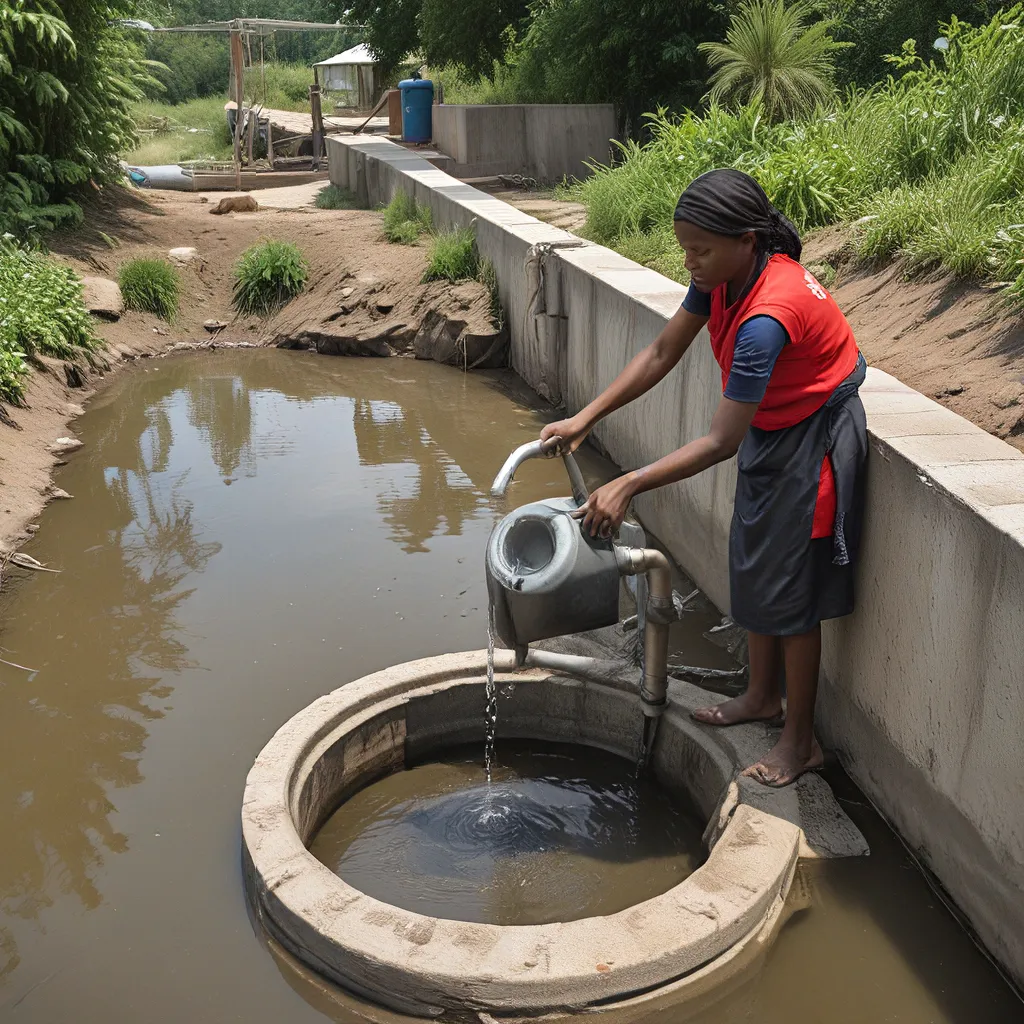
As a concerned citizen and someone who’s been on the frontlines of the fight for clean water access, I’ve seen firsthand the stark disparities in how different communities are impacted by water-related issues. It’s a problem that goes far beyond mere technical challenges – it’s a matter of social justice, and it’s something we can’t afford to ignore any longer.
You see, when it comes to wastewater treatment and water management, the harsh reality is that historically marginalized communities often bear the brunt of the burden. Whether it’s exorbitant water bills that leave families choosing between basic necessities, or the health risks posed by contaminated water, the injustice is palpable. And the sad truth is, these issues are often compounded by systemic inequalities that have persisted for far too long.
But here’s the thing – water can also be a force for equity and opportunity. By rethinking the way we approach wastewater treatment and water management, we have the power to create a more just and inclusive future. And that’s exactly what the Water Equity Network is working to achieve.
Addressing the Water Equity Challenge
The Water Equity Network, created and supported by the US Water Alliance, is a nationwide community of practice dedicated to tackling the disparities and advancing equity in water management. Comprising water utility leaders, community-based organizations, resident leaders, environmental justice advocates, and philanthropic partners, this diverse coalition is taking direct action to ensure that all communities have access to clean, safe, and affordable water services.
At the heart of the Water Equity Network’s mission is the belief that water equity is essential for creating thriving, healthy communities for all. This means ensuring that:
- All communities have access to clean, safe, and affordable drinking water and wastewater services.
- Communities share in the economic, social, and environmental benefits of water systems.
- Communities are resilient in the face of floods, drought, and other climate risks.
By working collaboratively across sectors, the Network is making strides towards this vision, leveraging water investments to create positive outcomes for historically marginalized communities.
The Power of Cross-Sector Partnerships
One of the key ways the Water Equity Network is driving change is through the formation of cross-sector partnerships. By bringing together water utilities, community organizations, and other stakeholders, they’re able to tackle complex water equity challenges from multiple angles.
Take the example of the Wastewater Treatment Division (WTD) in King County, Washington. This utility is leading the charge in sustainability and social justice, ensuring that equity and positive outcomes for communities are at the forefront of their capital projects and operations.
Through collaborative efforts, the WTD is not only implementing cutting-edge green building and sustainability practices, but also actively advocating for equity considerations to be woven into every aspect of their work. By forging partnerships with community groups and other stakeholders, they’re able to identify and address the unique water-related challenges faced by historically marginalized populations.
Innovative Solutions for Water Equity
But the Water Equity Network isn’t just talking the talk – they’re walking the walk, too. From digital solutions that enhance water affordability and accessibility to climate resilience strategies that protect vulnerable communities, the Network is pioneering innovative approaches to advance water equity.
Take, for instance, the Georgetown Wet Weather Treatment Station in King County, Washington. This project, which earned the prestigious Platinum Envision Award from the Institute for Sustainable Infrastructure, is a shining example of what’s possible when we put equity and sustainability at the heart of our water infrastructure investments.
By incorporating green infrastructure, energy efficiency, and community engagement into the design and construction of this facility, the WTD was able to ensure that the benefits of this critical wastewater project were shared equitably with the surrounding neighborhoods. It’s a model that other utilities and communities can learn from as they work to create more just and resilient water systems.
And the Salmon-Safe Certified projects led by the King County WTD are another great example of how water management can be leveraged to drive positive environmental and social outcomes. By aligning their sewer line upgrades with habitat restoration and urban watershed protection, the WTD is not only improving water quality, but also supporting the livelihoods and cultural traditions of local communities.
The Road Ahead: Towards an Equitable Water Future
As I reflect on the work of the Water Equity Network and the inspiring examples of water utilities like King County’s WTD, I can’t help but feel a sense of cautious optimism. The path towards water equity is not an easy one, and there are certainly challenges and complexities that we’ll need to navigate along the way.
But the dedicated individuals and organizations that make up the Water Equity Network are proving that it’s possible to transform the way we think about and manage our water resources. By centering equity, collaboration, and innovation, they’re paving the way for a future where all communities have access to the clean, safe, and affordable water they deserve.
Of course, there’s still a long way to go, and the work is far from done. Ongoing research, evolving best practices, and continued cross-sector cooperation will be essential as we strive to make water equity the new normal, not the exception. But with visionary leaders, committed partners, and resilient communities, I believe we can create the just and sustainable water future that everyone deserves.
So, let’s keep the momentum going. Let’s challenge the status quo, amplify the voices of marginalized communities, and harness the power of water to build a more equitable world. Because when it comes to the fundamental human right of access to clean water, there’s simply no room for compromise.